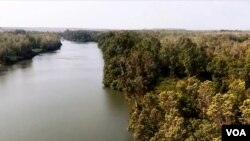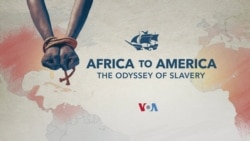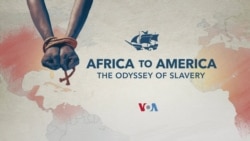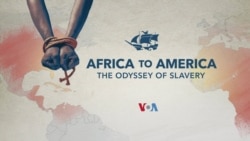It is 4 pm on May 21st. We land in Luanda. It's the beginning of winter or cacimbo, as it is called in Angola. As the plane descends, the heat near the ground causes the air to shimmer, promising warmer weather than expected at this time of year. Betty, a photojournalist, and I were about to be warmly welcomed by the weather and by the people.
We settled into a hotel in downtown Luanda, where tall modern buildings overshadow the older colonial-era houses. Every time I return to Luanda, I feel that modernity is taking over, trying to replace the richness of the country's landmarks with the new high-rises that are clogging Luanda's streets.
We had a long list of iconic sites to visit, ranging from Luanda to Benguela, but we had to restrain our enthusiasm until we met with the authorities at the Anibal de Melo National Press Center (CIAM in Portuguese). Foreign media visitors to Angola must get credentials from CIAM before beginning to work.
During a two-hour meeting, we explained why there was so much interest in our project, titled "Africa to America – The Odyssey of Slavery." The history of slavery is not well known in Angola, especially since there are few written references, but it quickly became apparent that there was no lack of interest in the subject.
We got our credentials and drove south to Kilometer 25 on National Route #100, where we found a small house -- now a museum -- facing the Atlantic Ocean and Mussulo Island. Far from the bustle of Luanda, this place exhibited a peacefulness that belied a dark past: This house, the museum director explained, was once a place to forcibly baptize Africans and give them European names so they could be purged of bad spirits. The captured Angolans were first forced to drink an alcoholic beverage so they wouldn't resist the ritual.
This story, I confess, shook my Christian beliefs.
I was born in Angola and I visit Luanda almost every year. And I have long been aware of how Africans were enslaved and shipped to America. But I never really connected that history with the country of my birth, perhaps because slavery in Angola began a century before the first Angolan slaves arrived in colonial Virginia and continued even after Britain abolished slavery in 1833. And I certainly never understood slavery's strong connection with religion.
Betty and I wanted to find out more about the whole process. We knew the Portuguese dominated the slave trade in what is now Angola, and we had discovered how much the Catholic Church was involved. But there was more to discover, other places to see, and other historical characters to learn about.
I can say this was a special trip.
Among the historians we met were a descendant of a slave who had been sent to Brazil, and the screenwriter for the movie "Njinga – Queen of Angola." Isilda Hurst, the historian and screenwriter, took us to the mystical Kwanza River, famous for its floating islands, forests, alligators and fishermen.
Here, we hired a drone operator and embarked on a memorable boat trip down the Kwanza River, following the route along which captured Africans were ferried to the Atlantic coast and the waiting slave ships.
Njinga the warrior queen, who reigned over the Ndongo and Matamba kingdoms in the 17th century, was already at war with the Portuguese when in 1618 Mendes de Vasconcelos, a Portuguese governor who led a campaign against the Ndongo people, captured thousands of prisoners. Twenty of them ended up in colonial Virginia.
Luanda was founded in 1575 by Portuguese Paulo Dias de Novais, who built S. Miguel Fortress a year later. Today, smiling children visit this place overlooking Luanda Bay on school trips, unaware of the grim reasons the fortress was built.
It was erected to protect the city, yes, but not only that: For centuries, underground tunnels ran from the fortress to the bay, where slaves would embark on a trip of no return.
This fortress is also a great source of information. It has a house - Casa Mata - displaying precious centuries-old artifacts, and its walls are covered in blue tiles depicting parts of Angola's history dating from the 1400s.
While in Angola, we also went to the National Museum of Slavery, we visited one of the oldest churches in Luanda, and we breathed Angola's culture in the city of Benguela, where the National Archeological Museum sits in what was once a slave warehouse.
I was born in Benguela, very close to this warehouse, now worn down by time and the salty air wafting in from Morena Beach. My mom went to school in a building right beside it. This beach was a port of departure of enslaved people. Had I known this? Not really.
Reviewing our conversations with the authorities at CIAM, with the many historians and with the priests, one thing stood out: We had learned our history from books written by the Portuguese, and those books never conveyed the hardship, the resistance, the failed attempts to stand up against slavery, and the impact it had on the country.
Angola's past depends strongly on oral tradition, which is very common in Africa. But the tradition comes with a risk, because history belongs to its teller.
Angolans also want to keep the positive things in their hearts. A young girl I met at the fortress told me that "slavery was a bad thing, but we Africans don't like to remember the bad things." And we Angolans suffered a great many of them, from slavery to colonization and civil war. The non-stop pace of negative events left us no time to reflect.
I got the sense that people don't know how to look at the past without reigniting some kind of hatred. Preserving history might be mistaken for pointing fingers of guilt, so moving forward seems easier.
As I produced this series, I hear Maya Angelou saying: "History, despite its wrenching pain, cannot be unlived, but if faced with courage, need not be lived again."








